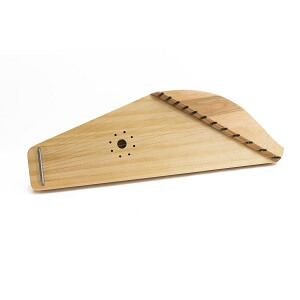Gusli
 This ancient instrument has been known since the 9th century and is widespread today in folk and symphony orchestras. Traditionally, a gusli has from 5 to 60 strings, depending on the type: the helmet-shaped (shlemovidnye) and wing-shaped (krylovidnye), which should be placed on the knees, the vertical lira-shaped (lirovidnye) and table-like piano-shaped (klavirnye), which most often are used in big folk orchestras. A musician called a guslyar plays using both fingers or a mediator, depending on the gusli’s size.
This ancient instrument has been known since the 9th century and is widespread today in folk and symphony orchestras. Traditionally, a gusli has from 5 to 60 strings, depending on the type: the helmet-shaped (shlemovidnye) and wing-shaped (krylovidnye), which should be placed on the knees, the vertical lira-shaped (lirovidnye) and table-like piano-shaped (klavirnye), which most often are used in big folk orchestras. A musician called a guslyar plays using both fingers or a mediator, depending on the gusli’s size.
The sound of this folk instrument will make you imagine yourself in a forest in a Russian kosovorotkashirt and hugging a birch. This instrument was in the hands of long-beard staretses (seniors) who were telling their byliny (legends) accompanied by calm music. It was the only instrument the bogatyrs (fairy warriors) played, making their enemies dance until the end. It’s neither a balalaika nor a horn. It’s a gusli, the ancient string musical instrument that was mentioned in most Slavic fairy tales.